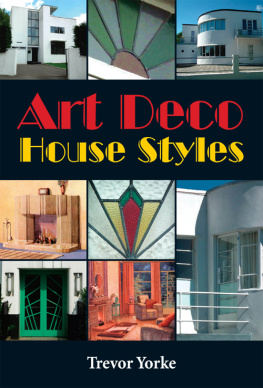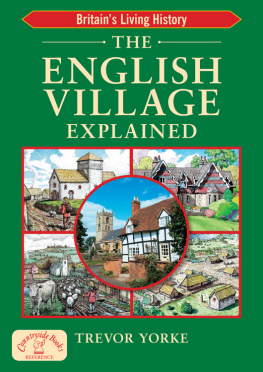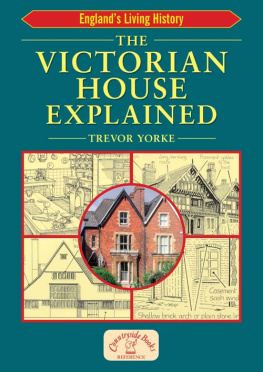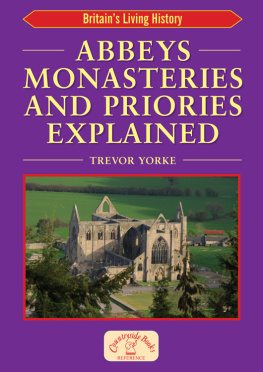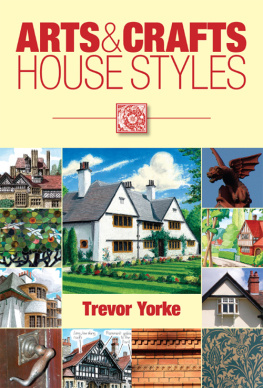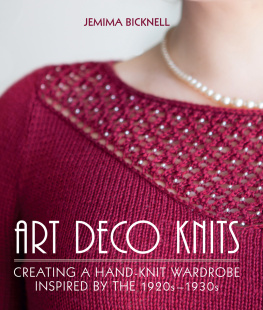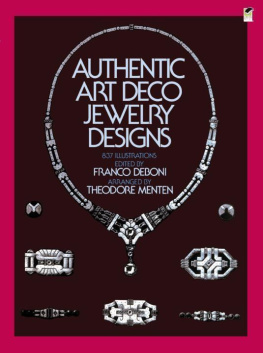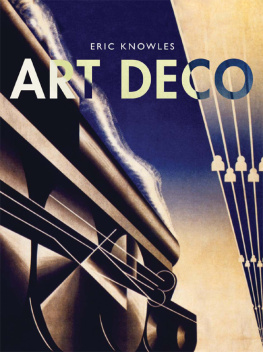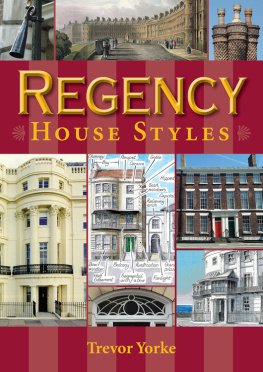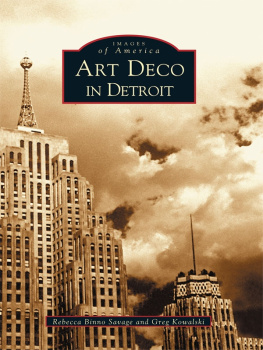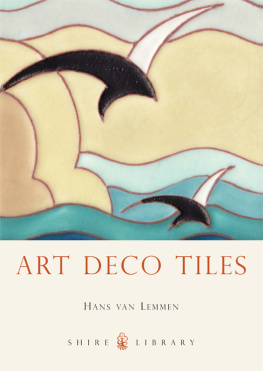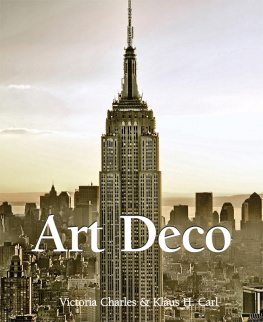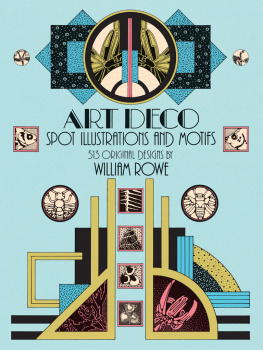


Trevor Yorke

COUNTRYSIDE BOOKS
NEWBURY BERKSHIRE
First published 2011
Trevor Yorke 2011
All rights reserved. No reproduction permitted without the prior permission of the publisher:
COUNTRYSIDE BOOKS
3 Catherine Road
Newbury, Berkshire
To view our complete range of books,
please visit us at
www.countrysidebooks.co.uk
ISBN 978 1 84674 247 7
Designed by Peter Davies, Nautilus Design
Produced through MRM Associates Ltd., Reading
Printed by Information Press, Oxford
CONTENTS

INTRODUCTION

M ost styles of house fall into neat categories: there are the rustic timber-framed structures, symmetrical Classical faades and brick Gothic buildings, with details from each being revived and reworked every few generations. Even today, new housing estates are full of homes that, although accommodating the latest technology, are inspired by these past designs since most owners in this country find comfort and pride in traditional British building styles. Yet there was one moment when in between these reassuring rustic faades could be found something stark, foreign and shocking: white, flat-roofed houses, with curved metal windows and bold geometric patterns the time was the 1930s and the style is known as Art Deco.
There is far more to Art Deco, though, than these familiar and unique buildings. Art Deco was a reaction against traditional forms and the tumultuous times. It could be luxurious, as represented in Hollywood musicals or adaptations of Agatha Christies Poirot books, exotic as inspired by the tomb of Tutankhamun, or streamlined and modern as shown on trains like the Mallard and Saturday morning screenings of Flash Gordon. It encompassed all aspects of designs, from huge factories down to the handles on a door, using new materials like chromium and Bakelite and the latest tastes from Europe and America. Think of the Hoover building in West London, the Chrysler skyscraper in New York, and the curving faades of Odeon cinemas and you will start to recognise this dynamic and distinctive style.
This book sets out to explain the background to Art Deco, introduce the most notable architects of the style and illustrate the unique features of Art Deco houses, using clearly-labelled drawings and photographs. The first chapter defines the style, explains how it developed and its effect upon contemporary and later culture. The second chapter describes the finest houses and the work of the leading architects, giving a brief biography of each and examples of their work. The next chapter shows the massproduced housing that imitated the work of these top designers and the streamlined semis that are the familiar face of Art Deco in this country. The fourth chapter is packed with line drawings and photographs of key features and distinctive details that can help identify the style and provide guidance for those wanting to select authentic pieces when renovating a house. The final part looks inside at the rooms and describes their original appearance and the style of decoration, furniture and fittings that could be found.
For anyone who simply wants to recognise the style, understand the contribution of key characters and appreciate what makes Art Deco houses special, this book will be a colourful and an easy-to-follow introduction to the subject. If the reader is fortunate enough to own such a house, then the illustrations and text will hopefully enlighten them as to its value and aid any planned renovation or redecoration. For those of us who can but look on and admire, I hope the book helps clarify the true essence of the style and why it is such a unique and valuable contribution to a street, a community or even a town; one that is gradually gaining appreciation and is in desperate need of protection for future generations.
TrevorYorke

 | ART DECO STYLE |
Definition and Origins
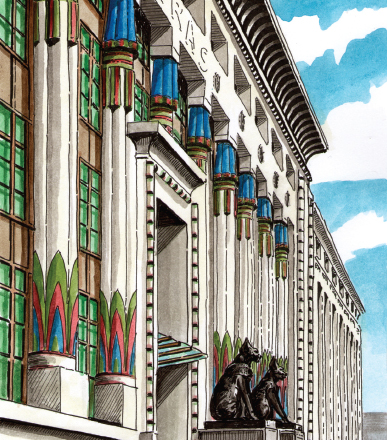
FIG 1.1: CARRERAS CIGARETTE FACTORY, CAMDEN, LONDON:Egyptianstyle decoration inspired by Howard Carters discovery of the tomb of Tutankhamun in 1922 and popularised by Hollywood is distinctive of the earlier phases of Art Deco.
A rt Deco is the style that reflected many of the themes from the inter-war years. The 1920s and 30s, squeezed between the cataclysmic world wars, were shaped by the economic effects and great loss of life of the first conflict and then a growing fear of the second war. This contrasted with a feeling of optimism in the initial belief that people had survived the war to end all wars and could escape from the drudgery within which many still found themselves trapped moods that were captured in images of jazz, outrageous fashion, Hollywood films and a love of the sun. Many found solace by surrounding themselves with traditional forms, their homes imitating Tudor or Georgian structures. Others, however, looked to the future and revelled in modernity and the exotic, having houses with streamlined, white exteriors and bold, geometric patterns within, inspired by designs from across the globe and using new materials. It is this latter group of buildings and objects that, although known at the time by a variety of terms, are today generally bundled together under the title Art Deco.
Your chances of enjoying the benefits of a new home in this style depended very much on where you lived and the class into which you were born. The working masses, especially those stuck in terraced slums within old industrial centres, suffered as factories closed in the wake of new global competition; the General Strike of 1926 and the Jarrow March of 1936 are vivid reminders of the struggle faced by millions. Yet, new opportunities in the car, aircraft, electrical appliance and chemical industries, mainly in towns and cities of the south of England and the Midlands, created an expanding number of white collar workers and managers. This was such that those who would be termed middle class nearly doubled in the space of a few decades to account for around a third of the population by 1939. It was this group who would be the principal driving force behind the rapid growth of suburbia in this period.
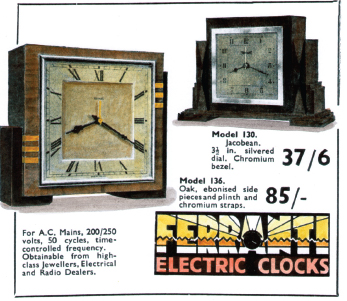
FIG 1.2:Art Deco could combine modernity and luxury, giving mass-produced objects a luxurious veneer. It could be glossy and exotic or stark and modern, but as in these clocks dating from the mid 1930s there was an underlining use of geometric shapes and horizontal lines as opposed to the floral and naturalistic shapes of styles before the First World War.

